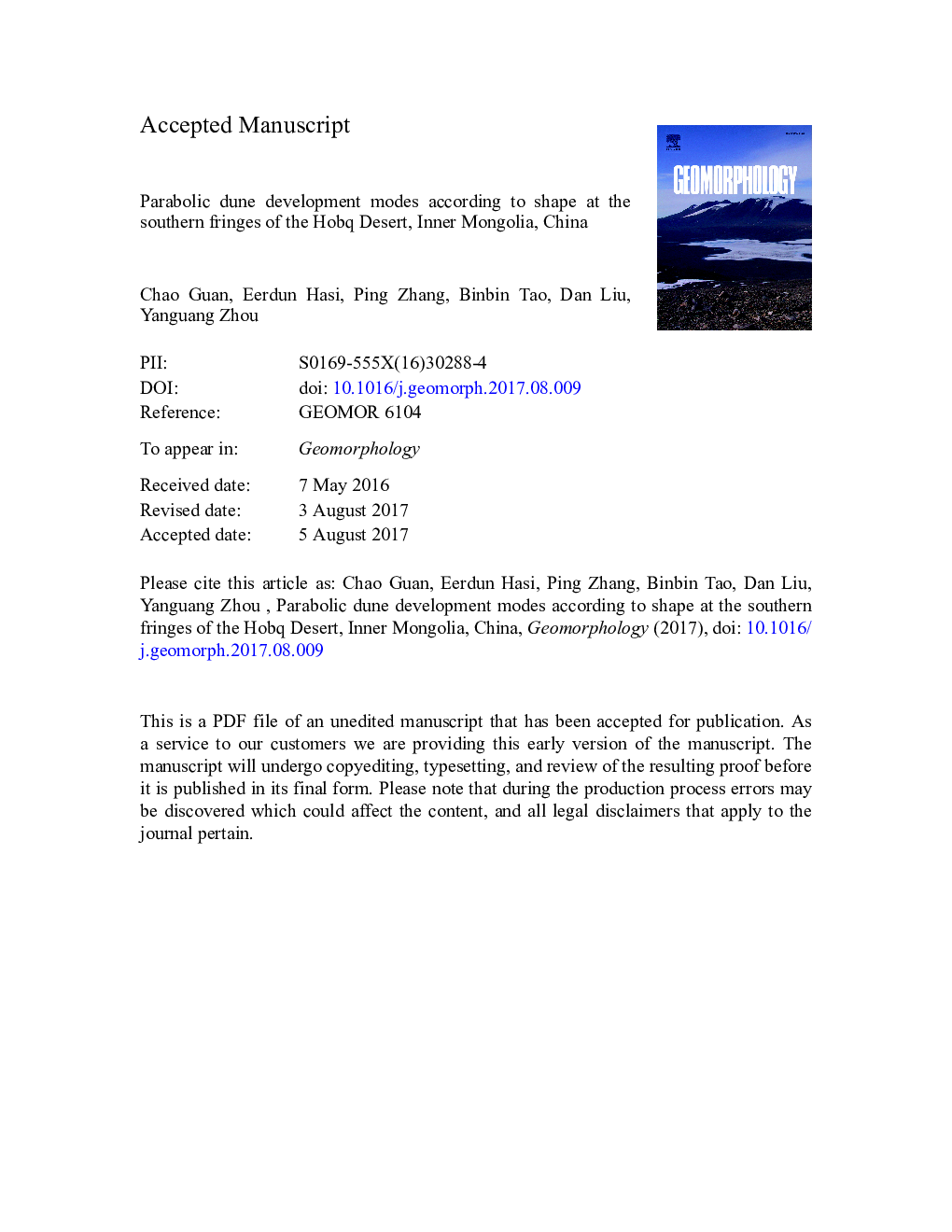| کد مقاله | کد نشریه | سال انتشار | مقاله انگلیسی | نسخه تمام متن |
|---|---|---|---|---|
| 5780782 | 1635355 | 2017 | 18 صفحه PDF | دانلود رایگان |
عنوان انگلیسی مقاله ISI
Parabolic dune development modes according to shape at the southern fringes of the Hobq Desert, Inner Mongolia, China
دانلود مقاله + سفارش ترجمه
دانلود مقاله ISI انگلیسی
رایگان برای ایرانیان
موضوعات مرتبط
مهندسی و علوم پایه
علوم زمین و سیارات
فرآیندهای سطح زمین
پیش نمایش صفحه اول مقاله

چکیده انگلیسی
Since the 1970s, parabolic dunes at the southern fringe of the Hobq Desert, Inner Mongolia, China have exhibited many different shapes (V-shaped, U-shaped, and palmate) each with a unique mode of development. In the study area, parabolic dunes are mainly distributed in Regions A, B, and C with an intermittent river running from the south to the north. We used high-resolution remote-sensing images from 1970 to 2014 and RTK-GPS measurements to study the development modes of different dune shapes; the modes are characterized by the relationship between the intermittent river and dunes, formation of the incipient dune patterns, the predominant source supply of dunes, and the primary formation of different shapes (V-shaped, U-shaped, and palmate). Most parabolic dunes in Region A are V-shaped and closer to the bank of the river. The original barchans in this region exhibit “disconnected arms” behavior. With the sand blown out of the riverbed through gullies, the nebkhas on the disconnected arms acquire the external sand source through the “fertile island effect”, thereby developing into triangular sand patches and further developing into V-shaped parabolic dunes. Most parabolic dunes in Regions B and C are palmate. The residual dunes cut by the re-channelization of river from transverse dune fields on the west bank are the main sand source of Region B. The parabolic dunes in Region C are the original barchans having then been transformed. The stoss slopes of V-shaped parabolic dunes along the riverbank are gradual and the dunes are flat in shape. The dune crest of V-shaped parabolic dune is the deposition area, which forms the “arc-shaped sand ridge”. Their two arms are non-parallel; the lateral airflow of the arms jointly transport sand to the middle part of dunes, resulting in a narrower triangle that gradually becomes V-shaped. Palmate parabolic dunes have a steeper stoss slope and height. The dune crest of the palmate parabolic dune is the erosion area, which forms a long and narrow trough between nebkhas by the “funnelling effect”. This process forces sand towards lee slopes, which transform from concave (original barchans) into convex, ultimately resulting in the formation of palmate parabolic dunes.
ناشر
Database: Elsevier - ScienceDirect (ساینس دایرکت)
Journal: Geomorphology - Volume 295, 15 October 2017, Pages 645-655
Journal: Geomorphology - Volume 295, 15 October 2017, Pages 645-655
نویسندگان
Chao Guan, Eerdun Hasi, Ping Zhang, Binbin Tao, Dan Liu, Yanguang Zhou,